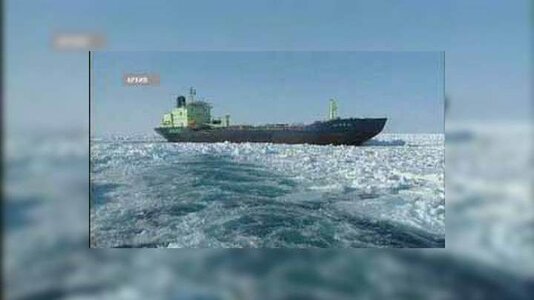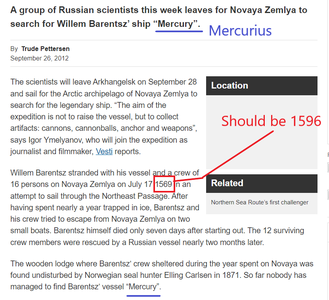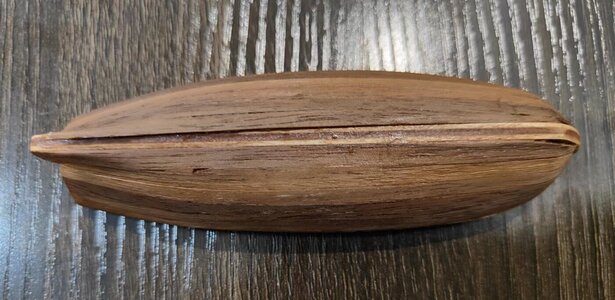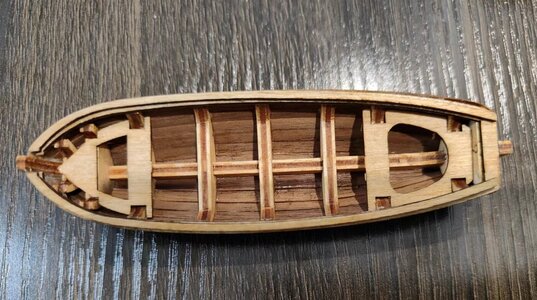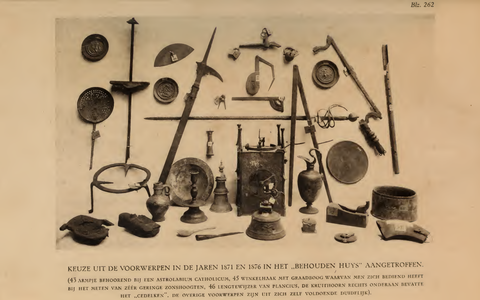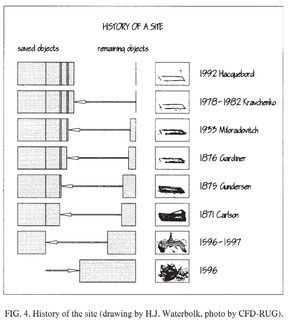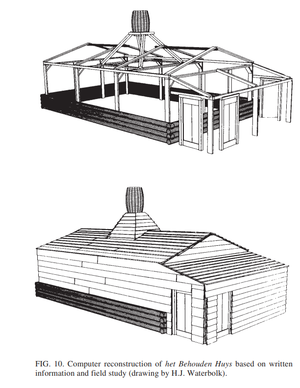This is typical for what happens when choices are made by people who are not acquainted with old-time shipbuilding rules. The standard misunderstanding is, that the number of lasts would be equivalent with the size of a ship. It is not. Lasts only indicate the loading capacity of a ship and nothing else.
Now what was the standard combination for ships that were sent for an expedition like this? One ship was 'heavily' armed, the other transported goods. Exactly how it was done with Abel Tasman's voyage around Australia and New Zealand in 1642: A yacht (Heemskerk) of 100 lasts and a fluit (Zeehaen) of 120 lasts. The yacht measured 106 feet, the fluit 100 feet. If the carrying capacity of a ship is sacrificed for armory, its loading capacity gets lesser.
Gerald de Weerdt followed a trace in the archives and found a 30 lasts 'vlieboot', which most likely was adapted to become Barendts discovery vessel. The name was 'Swaen' or 'White Swan'. No doubt he will publish about this in due time.
It's not really a guarantee for solid scientific work by these Russian researchers to make such a mistake. Perhaps they could learn by consulting people who do know a bit about such matters.
Thank you very much for your observation Ab. I am fully aware that lasten does not equate to size in length. (I have after all read your book and not just once!) I explained that as well in the section on the challenge associated with determining the size of Barentsz's ship.
I am merely trying to understand the name issue.
You say that Gerald has followed a trace in the archives ... Below are the actuarial notices I have available and have worked through. as per the Linschoten Vereeniging
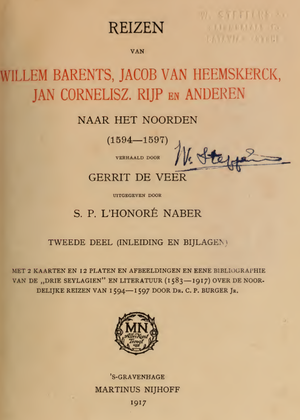
Bijlagen betrekking hebbende op de eerste reis, 1594.
I. Remonstrantie van Baltasar De Moucheren 183
II. Concept-instructie (Narratie) van De Moucheron voor Cornelis Cornelisz Nay 188 VII Bladz.
III. Schrijven over de voorgenomen expeditie dd. 7 Maart 1594 191
IV. Monsterrol van het schip De Zwaan (van Zeeland), tevens nominatieve staat der opvarenden 192
V. Instructies voor Brant IJsbrantsz en voor Willem Barents . 194
Bijlagen betrekking hebbende op de tweede reis, 1595.
I. Schrijven van Emanuel van Meteren (te Londen) aan Jacob Valcke, dd. 15 (25) Decemb. 1594, met: vertaling van een brief van Richard Hakluyt aan Emanuel van Meteren, dd. 6 Decemb. 1594 201
II. ld. van Van Meteren aan Jacob Valcke, dd. 18 (28) Januari 1595 204
III. ld. van Van Meteren aan Jacob Valcke, dd. 8 ( 1 8) Februari 1595 206
IV. ld. van Van Meteren aan Jacob Valcke, dd. 14 (24) Februari 1595 • • 209
V. Artikelbrief voor de schepen der expeditie, vastgesteld 13 Juni 1595 211
VI. Instructie voor Brant IJsbrantsz van Enkhuizen, den Viceadmiraal der vloot, dd. 16 Juni 1595 (met die voor Hendrik Hartman) 218
VII. Monsterrol van het Enkhuizer schip de „Hoop", dd. 19 Juni 1595, tevens nominatieve staat der opvarenden . . 226
VIII. Monsterrol van het Enkhuizer schip de „Mercurius", dd. 19 Juni 1595, tevens nominatieve staat der opvarenden . 228
IX. Uittreksels uit Purchas' „Hakluytus Posthumus" (His Pil- grimes), houdende gegevens omtrent aanteekeningen van Willem Barents 229
Bij lagen betrekking hebbende op de derde reis, 1596—1597.
I. Bezoldigingen. Uitrusting der schepen. Schafting . . 233
II. Resolutie van Amsterdam, uitlovende 25000 Gld. belooning op het vinden van den doortocht naar China en Indië . 235
III. Resolutie van de Staten Generaal, eveneens uitlovende 25000 Gld
IV. Extract-journaal van Willem Barents, boekstavende de ontdekking van Beren-Eiland en van Spitsbergen (in fransche vertaling) 237
V. Verklaring van Jan Cornelisz Rijp, boekstavende de ont-dekking van Beren-Eiland en van Spitsbergen (in fran- sche vertaling) 243 vin BUdz.
VI. Verklaring van Theunisz Claesz omtrent idem (in fransche vertaling) 245
VIII. Verklaring van Arent Martensz omtrent idem (in fransche vertaling) 247
Bijlagen betrekking hebbende op den afloop der reizen.
I. De in het „Behouden Huys" teruggevonden voorwerpen . 251
II. Staat van de magnetische variaties, waargenomen in 1594, '95) '96 en '97 263
BiBLioGRAPHiE van de „Drie Seylagien" en literatuur over de noordelijke reizen van 1594— 1597, door Dr. C. P. Burger Jr. . 267
Register, door W. C. Muller 325 Platen en kaarten:
Portret van Petrus Plancius, naar W. Delff(uit Scheurleer, Mannen ter Zee) ii
As an example of how detailed the commentary is on these:
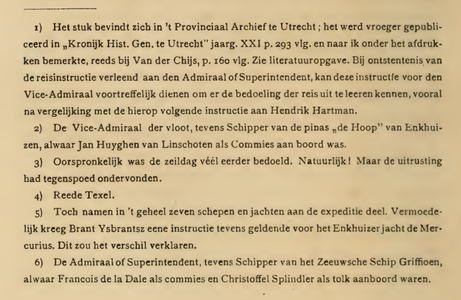
As you can see there is a LOT of information available on the First and Second Expeditions. Even a novice like myself, had little troubling finding that (with the great help of SOS members of course). But when an organization like the Linschoten Vereeniging which at the time of publication was a formidable international organization concludes that the names of the 1596 expedition remain unknown (and that as recent as 1917 when this report was published) I ask again:
How is this possible? And why are we waiting such a long time for any information on how the ship's name was found - especially when the ship has been christened in 2018 already!
Things are terribly vague here - in complete contrast to the first two expeditions.








